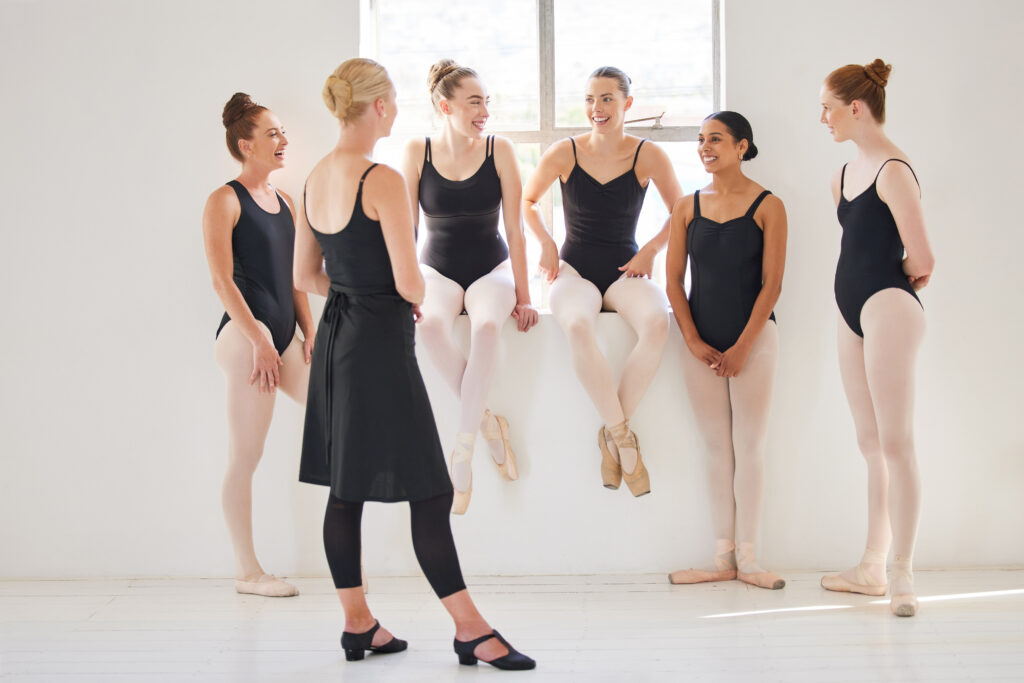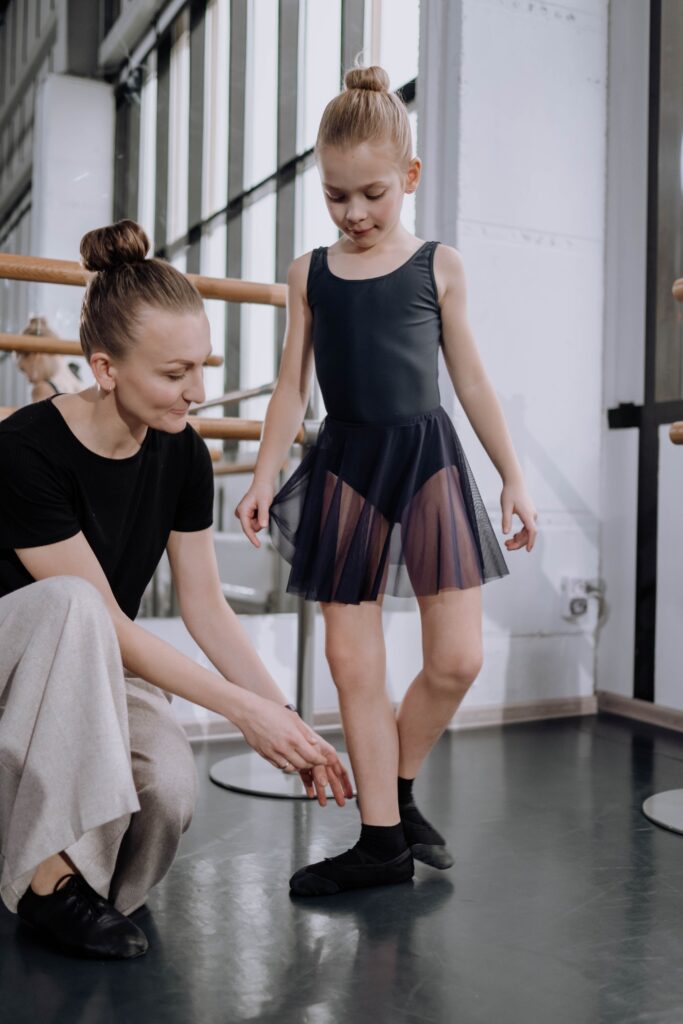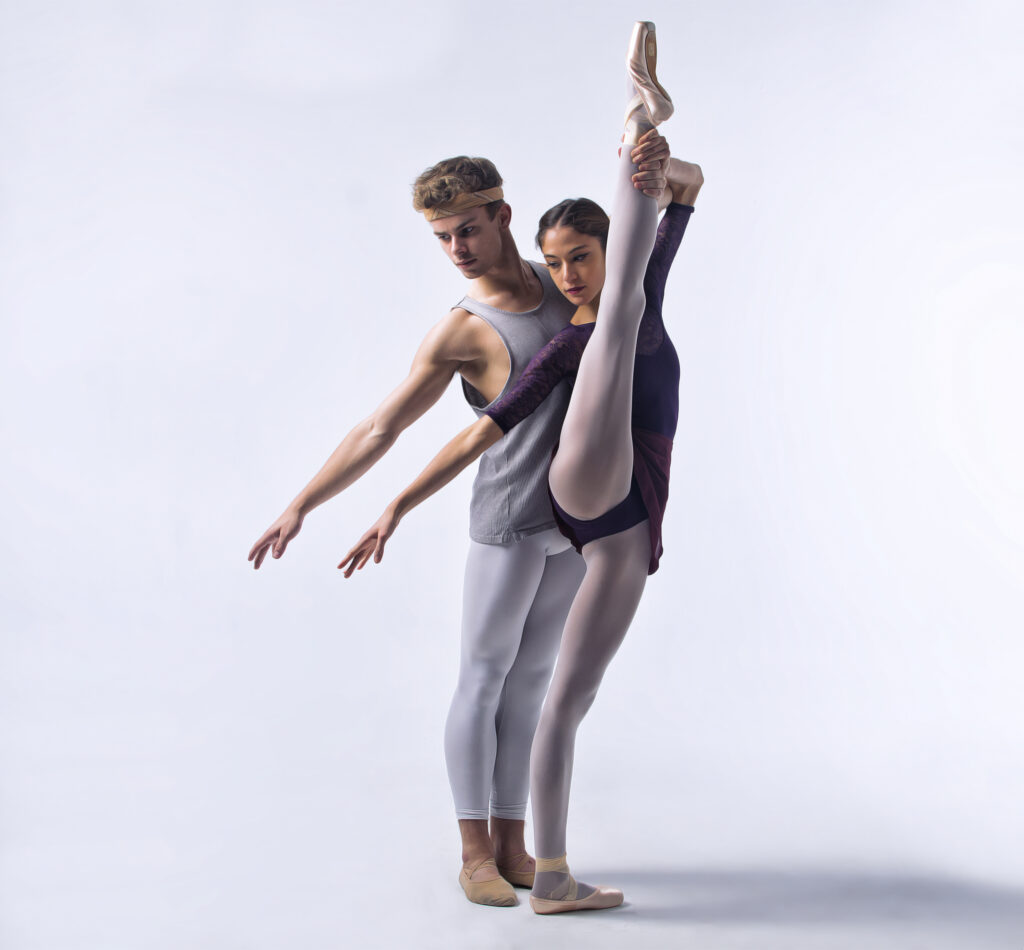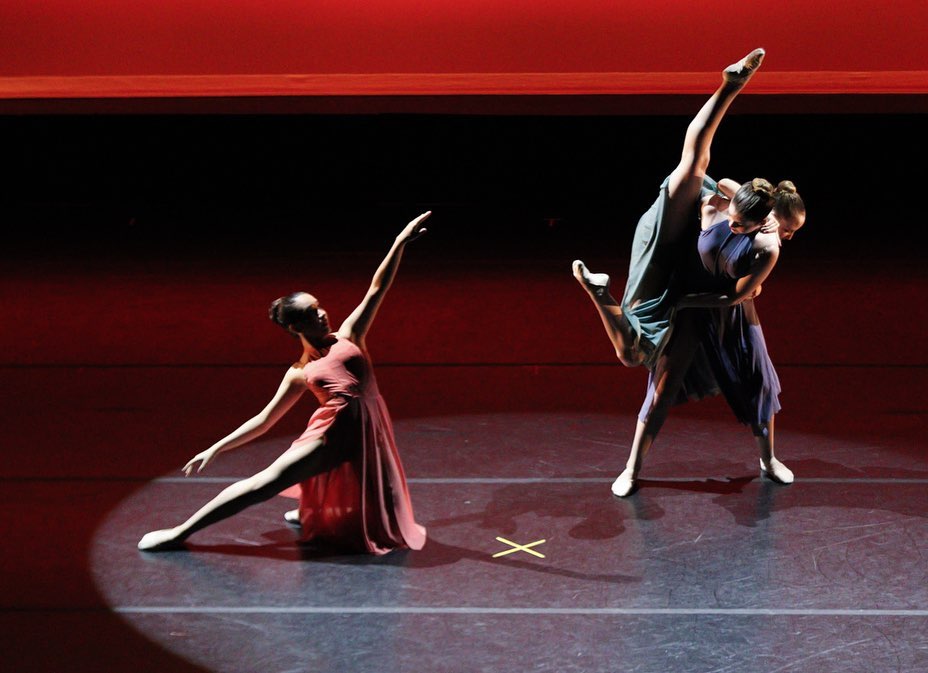Ballet education is a crucial part of a dancer’s journey. Quality instruction can make or break a student’s progress and love for the art form. RAD Certified Instructors stand out in the world of ballet education. They bring a level of expertise and dedication that sets them apart.

RAD Certified Instructors have completed rigorous training and exams to earn their credentials. This certification ensures they have a deep understanding of ballet technique, teaching methods, and safety practices. We believe this knowledge is essential for providing top-notch instruction to students of all ages and skill levels.
Choosing a ballet school with RAD Certified Instructors can give students and parents peace of mind. These teachers are equipped to guide dancers through proper technique and help them reach their full potential. We think it’s important for anyone looking into ballet education to consider the qualifications of their instructors.
Key Takeaways
- RAD Certification is a mark of quality in ballet instruction
- Certified instructors undergo extensive training and testing
- Students benefit from the expertise of RAD Certified teachers
What You Need to Know About RAD Certification

RAD certification is a key step for ballet teachers wanting to prove their expertise. It shows a deep understanding of ballet technique and teaching methods.
The Royal Academy of Dance
The Royal Academy of Dance (RAD) is a leading ballet organization. It was founded in 1920 to set high standards for dance teaching. RAD offers classes, exams, and teacher training worldwide. Its syllabus is used in over 80 countries.
RAD focuses on safe and proper ballet technique. It also promotes creativity and expression in dance. The academy updates its methods regularly to stay current with dance trends.
What is Needed for RAD Certification
To get RAD certified teachers must meet strict requirements. These include:
- A strong ballet background
- Passing written and practical exams
- Completing teaching courses
- Observing experienced instructors
The process takes time and hard work. Teachers must show they can plan lessons, teach different levels, and give feedback. They also learn about child development and safety in dance.
Once certified, teachers must keep learning. RAD offers ongoing training to stay up-to-date. This helps ensure high-quality ballet instruction for students.
RAD certification is widely respected in the dance world. It opens doors for teaching jobs at top ballet schools. Many parents look for RAD certified teachers when choosing dance classes for their children.
Why Certified Instructors Matter

RAD certification ensures ballet teachers meet high standards. This benefits students and maintains teaching quality.
How Students Benefit
Students gain many advantages from RAD certified instructors. We focus on proper technique and safety. Our teachers know how to prevent injuries and build strong foundations. Kids learn correct posture and alignment from day one.
RAD teachers use proven methods to help students progress. We understand child development and adjust lessons accordingly. Our classes are fun and engaging while still being challenging.
Students also get access to RAD exams and programs. These give clear goals to work towards. Passing exams boosts confidence and motivation.
How We Keep Teaching Standards High
We have strict requirements for RAD certified instructors. Teachers must pass rigorous exams on ballet technique and teaching methods. They demonstrate their skills through practical assessments.
Ongoing training is a must. We offer workshops and courses to keep teachers up-to-date. They learn about new teaching approaches and safety practices.
We regularly evaluate our teachers. This ensures they maintain high standards over time. Any issues are addressed quickly through mentoring or additional training.
Our syllabus is regularly updated based on the latest research. This keeps our teaching fresh and effective.
RAD Certified Instructors’ Training

RAD certified instructors go through rigorous training to earn their credentials. They must meet strict standards and keep learning throughout their careers.
Initial Training and Qualifications
To become an RAD certified instructor, dancers need strong ballet skills. They must pass tough exams in technique and teaching methods. The training covers dance history, anatomy, and child development.
Aspiring teachers learn how to plan lessons and give feedback. They practice teaching real students under supervision. The program takes 1-2 years to finish.
At the end, candidates take written and practical tests. They must show they can teach safely and effectively. Only those who pass all parts earn certification.
Ongoing Learning for Instructors
RAD certification is not a one-time thing. Teachers must keep improving their skills. They take workshops and classes each year to stay current.
The RAD offers many chances to learn:
- Summer intensives
- Online courses
- Conferences
Teachers can also earn higher levels of certification. This shows their growing expertise. They might focus on teaching advanced students or become teacher trainers.
We encourage our instructors to try new teaching methods. They share ideas with other teachers too. This helps everyone get better at their craft.
What’s Included in the Curriculum and Exams
The RAD curriculum covers a wide range of ballet skills and knowledge. Students progress through structured levels as they develop their abilities and understanding.
How the Learning is Organized
We organize RAD ballet training into age-appropriate levels. These start with Pre-Primary and Primary for young children, then move through Grades 1-8 for older students. Each grade builds on skills from previous levels.
Classes focus on:
- Technique exercises at the barre and in center
- Dance sequences and combinations
- Music and rhythm training
- Performance skills
Students learn proper posture, alignment, and ballet vocabulary. As they advance, they tackle more complex steps and choreography. Higher grades also include pointe work for female students.
How Students are Assessed and Move Forward
RAD exams test students’ progress at each level. Certified examiners visit schools to assess students. The exams include:
- Set exercises and dance combinations
- Improvisation tasks
- Questions on ballet terminology
Students get marks for:
- Technical skill
- Musicality
- Performance quality
- Knowledge of ballet terms
Passing an exam lets a student move to the next grade. Top scorers can earn merit and distinction awards. These recognized qualifications show a student’s ballet ability.
The Impact on the Ballet Community

RAD Certified Instructors have greatly shaped ballet education worldwide. Their influence extends beyond individual studios, improving artistic standards and expanding access to quality training globally.
Upholding Artistic Standards
RAD Certified Instructors maintain high levels of ballet technique and artistry. They follow a strict curriculum that focuses on proper form, musicality, and expression. This ensures students learn correct methods from the start.
These teachers regularly update their skills through workshops and assessments. They stay current with the latest teaching methods and industry trends. As a result, their students are well-prepared for professional careers or higher education in dance.
RAD certification also gives parents and students confidence in choosing a qualified instructor. They know they’re getting top-notch training that meets international standards.
Enhancing Global Ballet Education
RAD Certified Instructors have helped spread quality ballet education around the world. The RAD’s global presence means students in many countries can access the same high-level training.
These teachers often work in diverse settings, from small towns to big cities. They bring professional-level instruction to areas that may not have had it before. This has led to more young dancers discovering their passion and pursuing further training.
RAD’s network also fosters cultural exchange among ballet teachers and students. International workshops and events allow for sharing of ideas and techniques across borders. This global community strengthens the art form as a whole.
Selecting a Ballet School

Choosing the right ballet school is crucial for a dancer’s development. The school’s accreditation and instructor qualifications play key roles in ensuring quality education.
How to Recognize RAD Accreditation
RAD (Royal Academy of Dance) accreditation is a mark of excellence in ballet education. RAD-accredited schools follow a structured curriculum that focuses on proper technique and artistic expression. Look for the RAD logo on the school’s website or marketing materials. You can also check the RAD’s official directory of accredited schools.
RAD schools often offer exams and performance opportunities. These help students measure their progress and gain confidence. When visiting a school, ask about their RAD-based classes and programs. Accredited schools will proudly share this information.
How to Check Instructor Qualifications
Qualified instructors are essential for safe and effective ballet training. RAD Certified Instructors have completed rigorous training and exams. They stay updated on the latest teaching methods and safety practices.
Ask the school about their instructors’ backgrounds and certifications. Look for teachers with RAD qualifications or degrees in dance education. Experienced instructors often have professional performance experience too.
Royal Ballet and other top companies list their faculty credentials. This can give you an idea of what to look for in qualified teachers. Don’t hesitate to ask about ongoing training for instructors. Good schools invest in their teachers’ continued education.
When searching for “ballet schools near me,” prioritize those with RAD accreditation and certified instructors. These factors can make a big difference in a student’s ballet journey.
How to Compare Different Certifications
Comparing ballet certifications helps dancers and parents choose high-quality instruction. Key factors include curriculum standards, exam processes, and global recognition.
RAD versus other Ballet Certifications
The Royal Academy of Dance (RAD) certification stands out in the ballet world. It has a structured syllabus that covers technique, music, and performance skills. RAD exams are known for their rigor and consistency worldwide.
Other major certifications include the Cecchetti method and American Ballet Theatre’s National Training Curriculum. Each has its own focus and strengths. Cecchetti emphasizes body alignment and Italian technique. ABT’s program blends various styles for a well-rounded approach.
We recommend looking at each certification’s history and global reach. RAD is recognized in over 80 countries, giving it an edge in international dance circles.
Recognizing Quality Instruction
Quality ballet instruction goes beyond certification alone. We suggest watching a class to see how the teacher interacts with students. Good instructors give clear, age-appropriate feedback.
Look for teachers who continue their own education. They should attend workshops and stay updated on best practices. Safe dance practices are crucial. Check if the studio has proper flooring and follows injury prevention guidelines.
Student progress is a key indicator of quality teaching. Ask about performance opportunities and exam results. A mix of technique classes and creative expression is ideal for young dancers.
Role of Parents and Guardians
Parents play a key part in a child’s ballet journey. Their support and involvement can make a big difference in a young dancer’s progress and enjoyment of ballet.
Supporting Your Child’s Ballet Education
We encourage parents to take an active role in their child’s ballet training. This means helping them practice at home and making sure they get to class on time. It’s also good to watch some classes to see how your child is doing.
Parents should talk to their kids about ballet. Ask them what they like best and what they find hard. This helps kids feel supported. It’s also smart to learn some ballet terms. This way, you can chat with your child about what they’re learning.
Make sure your child has the right gear for class. This includes proper shoes, tights, and leotards. Having the right clothes helps kids feel like part of the group.
Engagement with Instructors and Schools
We think it’s vital for parents to build good ties with ballet teachers. Go to parent meetings and showcases. These events let you learn more about your child’s progress.
Don’t be shy about talking to the teacher. If you have questions or worries, speak up. Teachers can give tips on how to help your child at home.
Keep an eye on your child’s growth in ballet. Are they having fun? Are they learning new skills? If you see any issues, talk to the teacher right away.
It’s also good to get to know other ballet parents. You can share tips and support each other. This creates a strong dance community for your child.
Checkout our Dance Classes:
Ballet Classes, Pointe Classes, Hip Hop Classes, Jazz Classes, Tap Classes, Musical Theatre
Visit Us On Social Media!
Royale Ballet Dance Academy
7517 Campbell Rd #400, Dallas, TX 75248
(972) 818-4949
comments +